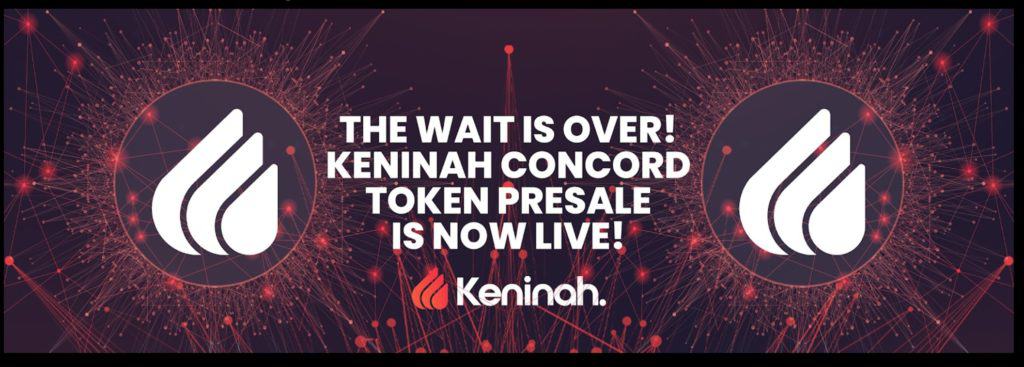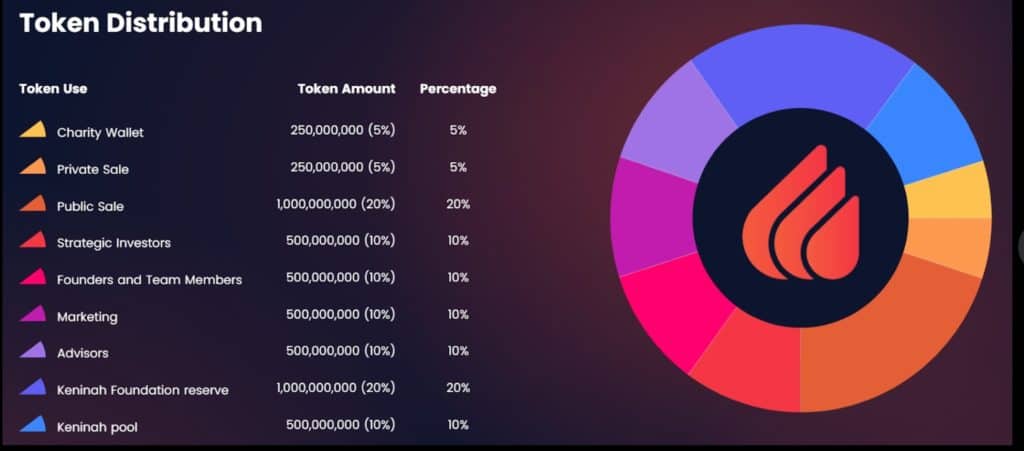Since their introduction into the world’s financial market, cryptocurrencies have given the market a boost and contributed to its major growth and development. Old cryptocurrencies like Litecoin (LTC) and Polygon (MATIC) have provided a variety of use cases by helping to solve real-world problems. Keninah Concord (KEN) is a new cryptocurrency that aims to solve even more real-world problems by leveraging blockchain technology to help war victims. This article is centered around Keninah Concord (KEN) and how it intends to contribute to crypto adoption alongside Litecoin (LTC) and Polygon (MATIC).
Keninah Concord (KEN)
Focused on putting its community first, Keninah Concord (KEN) is a platform that aims to assist war victims from around the world to gain access to help through donations by integrating and utilizing cryptocurrency, blockchain, and its underlying technology to give efficiency and help this cause.
The Keninah Concord (KEN) platform is an open-source and fully decentralized platform that intends to engage and utilize all the benefits associated with decentralized finance (DeFi) powered by its community, give donors to war victims wholesome transparency and reliability, and ensure that the war recipients get prompt delivery of donations.
The Keninah Concord (KEN) network also intends to achieve simplicity and accessibility by making its platform user and eco-friendly by providing features such as a payment gateway, a donations wallet, and a means of verifying on-chain transactions.

Does the Keninah Concord (KEN) Platform have a Roadmap?
Contained in its whitepaper, the Keninah Concord (KEN) platform has a roadmap that is divided into two phases. The activities that will occur in each phase are as follows:
- Phase 1:
- Core team formation.
- Website launch.
- First token event.
- Phase 2:
- MVP Release.
- Second token offering with a fully functional product.
- Beta Version release.
- Listing on exchanges.
- Expansion of team.
- Final product rollout.
More information about the Keninah Concord (KEN) roadmap can be found in its whitepaper.
The KEN Token Supply and Distribution
The KEN token, the native utility and governance token of the Keninah Concord (KEN) platform, has uniquely structured tokenomics, token supply, and distribution that make it unique and stand out from other tokens on the crypto market today. The KEN token will be built around smart contracts and supported by the Binance Smart Chain (BSC).
The KEN token will have a total maximum supply of 5 billion tokens which will be allocated as follows:
- 5% of the total supply will be allocated to the Keninah Concord (KEN) charity wallet where it will be distributed to charitable institutions and organizations around the globe.
- 5% of the total token supply will be sold during the token’s private sale.
- 20% of the total supply will be offered up for sale to the public.
- 10% will be given to strategic investors in the Keninah Concord (KEN) platform.
- 10% will be allocated to the founders and members of the Keninah Concord (KEN) community.
- 10% will be allocated to the marketing team for the advertisement and public enlightenment of the Keninah Concord (KEN) token.
- 10% will be given to the platform’s advisors.
- 20% will be allocated to the Keninah Concord (KEN) Foundation reserve.
- 10% will be allocated to the Keninah Concord (KEN) liquidity pool.
The Keninah Concord ecosystem is also offering users who purchase the KEN token using Ethereum (ETH) or Binance Coin (BNB) on the Binance Smart Chain (BSC) an 11% or 14% bonus respectively.

Polygon (MATIC) and Litecoin (LTC)
Formerly known as Matic Network, Polygon (MATIC) is a Layer 2 easy-to-use scaling solution for scaling on the Ethereum (ETH) blockchain network and the development of blockchain-related infrastructure. The Polygon (MATIC) Network is supported by Polygon SDK. Polygon SDK is the modular, flexible core component of the Polygon (MATIC) network that supports the building and development of different types of decentralized applications (dApps) on the Polygon (MATIC) network. The Polygon (MATIC) network effectively uses its features to transform Ethereum (ETH) into a multi-chain system by leveraging Ethereum’s vibrant ecosystem, security, and openness.
Founded in 2013 by early cryptocurrency and digital asset adopter Charlie Lee, Litecoin (LTC) is an altcoin that utilizes blockchain technology to enable the operation of fast, secure, and low-cost transactions on its network. Litecoin (LTC) was developed based on Bitcoin’s (BTC) code, however, Litecoin (LTC) possesses several distinguishing features from the pioneer cryptocurrency. For instance, Litecoin (LTC) has a relatively fast block time of 2 minutes and 30 seconds, and cheap transaction fees thereby making the Litecoin (LTC) protocol suitable for the operation and regulation of micro and small-scale transactions and Point-Of-Sale (POS) payments.
The Polygon (MATIC) Network Mechanism of Operation
The Polygon (MATIC) network is secured by a combination of the Proof-of-Stake (PoS) consensus mechanism and Plasma Framework blockchain architecture. The Plasma Frameworks mechanism was proposed by Ethereum’s (ETH) creator, Vitalik Buterin. The framework enables the relatively easy execution and running of scalable and autonomous decentralized smart contracts.
The Polygon (MATIC) team is focused on creating new features that will be built around this hybrid Plasma-PoS mechanism to expand and boost the network’s ability to cater to diverse needs from the Polygon (MATIC) ecosystem. The team will also ensure to develop the Plasma-PoS technology so that it can lead to the growth of a larger ecosystem through its scalability.
Due to the unique hybrid mechanism that serves as Polygon’s underlying technology, about 65,000 transactions are performed per block of each of the Polygon (MATIC) network’s side chains. These transactions occur with a respectable and particular block confirmation time of fewer than two seconds per transaction.
The Polygon (MATIC) network is powered by its native cryptocurrency governance and utility token known as MATIC. The token is an ERC-20 standard token that is built on the Ethereum (ETH) blockchain. The MATIC token has a fixed total maximum supply of 10 billion tokens and this makes the token deflationary. The token serves various use cases but it is mainly utilized by being burned as base fees on the Polygon (MATIC) network. Of the total maximum supply of the token, 19% was sold during the token’s initial launchpad sale in 2019. The remaining MATIC tokens are allocated as follows:
- 16% is given to the Polygon (MATIC) team,
- 4% is allocated to the network’s advisors,
- 12% is distributed to the Polygon Network Operations,
- 21.86% will be utilized as the Polygon (MATIC) network’s foundation tokens,
- 23.33% will be allocated and utilized as ecosystem tokens.
What is Litecoin (LTC) all about?
Litecoin (LTC) is the second purest cryptocurrency in the world behind Bitcoin (BTC). Although Bitcoin (BTC) offers numerous benefits to its users and the world’s financial market as a whole, its network is plagued by several limitations including but not limited to slow transaction speeds and expensive transaction and gas fees. Litecoin (LTC) on the other hand has fast transaction speeds and is cost-efficient as its transaction fees are very cheap and nearly negligible.
The Litecoin (LTC) protocol allows mining on its protocol as it utilizes the same consensus mechanism as Bitcoin (BTC) called the Proof-of-Work (PoW) consensus mechanism. The algorithm of this consensus mechanism allows transactions performed on the Litecoin (LTC) protocol to be processed quickly and without errors.
LTC, the native token of the Litecoin (LTC) protocol has a total maximum supply of 84 million coins of which 70 million are currently in circulation. Find more information here.
